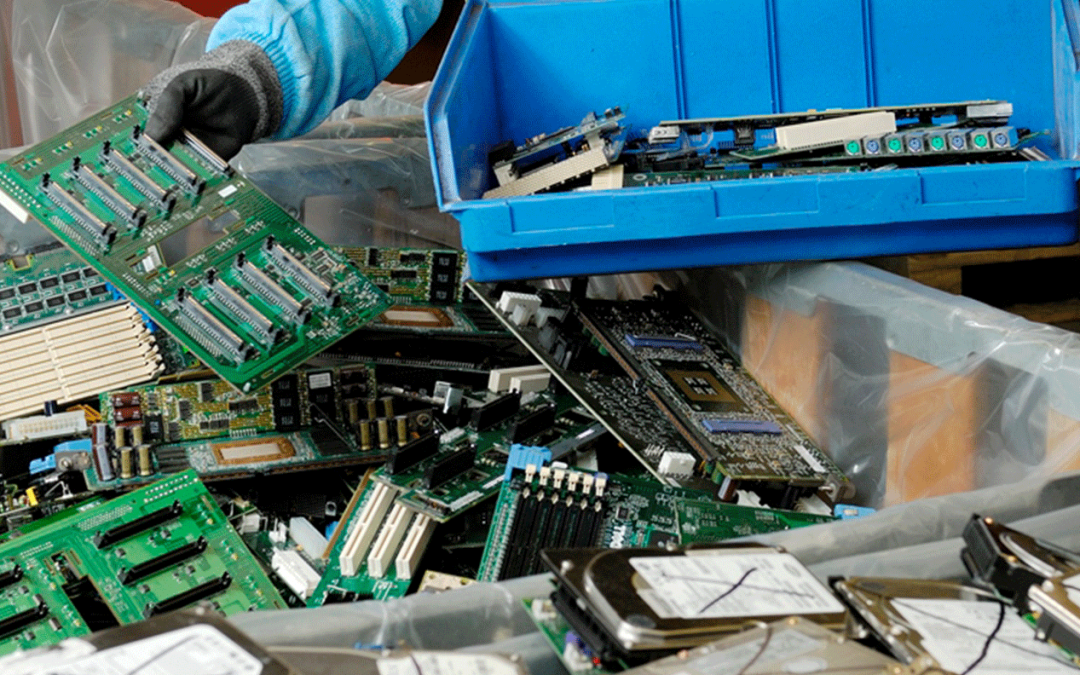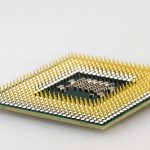As technology rapidly evolves, the turnover of electronic devices, particularly computers, has significantly increased. This surge in electronic waste (e-waste) poses a growing environmental challenge. Computer recycling has emerged as a critical practice to mitigate the adverse environmental impacts of e-waste. By recycling computers, we can recover valuable materials, reduce landfill waste, and prevent the release of hazardous substances into the environment.
However, amidst the environmental benefits of computer recycling, another crucial aspect that often goes unnoticed is data security. Computers store vast amounts of sensitive information, from personal details to financial records and business data. If these devices are not properly handled during the recycling process, they can become a significant security risk. Data breaches resulting from improperly recycled computers can lead to severe consequences, including identity theft, financial loss, and reputational damage.
This post aims to highlight the critical steps and considerations for ensuring data security when recycling computers. By understanding the risks and implementing proper data destruction methods, individuals and businesses can safely recycle their computers without compromising sensitive information.
Table of Contents
Understanding the Risks
Potential Data Breaches
When computers are recycled without proper data destruction measures, they pose a serious risk of data breaches. Simply deleting files or performing a factory reset is often insufficient to completely remove sensitive information. Improper handling of these devices can lead to the exposure of various types of sensitive data, including:
- Personal Information: Names, addresses, Social Security numbers, and other personal identifiers.
- Financial Records: Bank account details, credit card numbers, tax documents, and financial statements.
- Business Data: Proprietary information, client data, strategic plans, and confidential communications.
Even a single data breach can have far-reaching consequences, affecting individuals, businesses, and organizations.
Consequences of Data Exposure
The exposure of sensitive data due to improper recycling can lead to several severe consequences:
- Legal Ramifications: Data breaches can result in hefty fines and legal actions. Many jurisdictions have strict data protection laws and regulations, such as GDPR in Europe and CCPA in California, which impose significant penalties for non-compliance.
- Personal Consequences: Individuals can suffer from identity theft, where malicious actors use their personal information to commit fraud. Victims may face financial losses, credit damage, and the lengthy process of restoring their identity.
- Business Implications: For businesses, data breaches can lead to a loss of customer trust, reputational damage, and competitive disadvantage. Additionally, companies may face regulatory scrutiny and costly legal battles.
Understanding these risks underscores the importance of secure data destruction during the computer recycling process.
Preparing Your Computer for Recycling
Step 1: Backup Your Data
Before recycling your computer, it is essential to back up all important files and data. This step ensures that you do not lose valuable information and can continue to access it from another device. There are several methods for data backup:
- External Hard Drives: Copying files to an external hard drive is a straightforward and reliable method. External hard drives offer ample storage space and are easy to use. Simply connect the hard drive to your computer, select the files you want to back up, and copy them over.
- Cloud Storage: Cloud services such as Google Drive, Dropbox, and OneDrive provide secure online storage for your data. These services offer the advantage of accessing your files from anywhere with an internet connection. To back up your data to the cloud, sign in to your cloud storage account, upload the desired files, and organize them as needed.
Backing up your data ensures that you have a secure copy of your information before proceeding with data erasure and recycling.
Step 2: Securely Erase Data
Properly erasing data from your computer is crucial to prevent unauthorized access. It is important to understand the difference between simply deleting files and securely erasing data:
- Deleting Files: When you delete files or perform a factory reset, the data is not truly erased. Instead, the operating system removes the file pointers, making the data invisible but still recoverable with specialized software.
- Securely Erasing Data: Secure data erasure involves overwriting the existing data with random patterns, making it irretrievable. This process ensures that all traces of the original data are eliminated.
Tools and Software for Data Wiping
Several tools and software are available to securely erase data from your computer:
- DBAN (Darik’s Boot and Nuke): DBAN is a free, open-source tool that securely wipes hard drives by overwriting data multiple times. It is particularly effective for erasing data on older computers.
- Eraser: Eraser is another free tool that allows you to securely delete files and wipe entire drives. It integrates with Windows Explorer, making it easy to use.
- CCleaner: While primarily known for system cleaning, CCleaner also includes a data wiping feature that securely erases files and drives.
Step-by-Step Guide to Performing a Complete Data Wipe
- Download and Install the Data Wiping Tool: Choose a reliable data wiping tool (e.g., DBAN, Eraser) and download it from the official website. Follow the installation instructions to set up the tool on your computer.
- Backup Your Data: Ensure all important files are backed up to an external hard drive or cloud storage.
- Run the Data Wiping Tool: Launch the data wiping tool and select the drive you want to erase. Choose the appropriate wiping method (e.g., multiple passes for higher security).
- Start the Wipe Process: Initiate the wiping process and wait for it to complete. This process may take several hours, depending on the size of the drive and the wiping method used.
- Verify the Erasure: Once the process is complete, verify that the data has been securely erased by attempting to recover files using data recovery software. If no data is recoverable, the wipe was successful.
By following these steps, you can ensure that all sensitive data is securely erased from your computer before recycling, minimizing the risk of data breaches.
Choosing a Reputable Recycler
Certifications and Standards
When selecting a recycler for your old computers, it is crucial to choose one that adheres to recognized certifications and standards. These certifications ensure that the recycler follows environmentally responsible and data-secure practices.
- R2 (Responsible Recycling): The R2 certification is a globally recognized standard for electronics recyclers. It ensures that recyclers operate with high environmental and data security standards. R2-certified facilities are audited regularly to ensure compliance with the standard’s stringent requirements.
- e-Stewards: The e-Stewards certification is another prominent standard that guarantees responsible e-waste recycling practices. Recyclers with this certification adhere to rigorous environmental and social criteria, ensuring safe handling of hazardous materials and secure data destruction.
How to Verify a Recycler’s Credentials and Practices
To ensure that a recycler meets the necessary standards, follow these steps:
- Check Certifications: Verify the recycler’s certifications by visiting the official R2 and e-Stewards websites. These sites maintain directories of certified recyclers.
- Request Documentation: Ask the recycler to provide copies of their certification documents and details of their auditing process.
- Visit the Facility: If possible, visit the recycling facility to observe their operations firsthand. This visit can provide insights into their handling of e-waste and data destruction processes.
- Read Reviews and Testimonials: Look for reviews and testimonials from other clients to gauge the recycler’s reputation and reliability.
Data Destruction Policies
When choosing a recycler, it is essential to ensure that they use certified data destruction techniques to protect your sensitive information.
Questions to Ask About a Recycler’s Data Destruction Methods:
- What data destruction methods do you use?
- Are your data destruction processes certified? If so, by which organizations?
- Can you provide a certificate of data destruction after processing my devices?
- Do you offer on-site data destruction services?
- How do you handle devices that contain particularly sensitive information?
Ensuring the Recycler Uses Certified Data Destruction Techniques
- Review Data Destruction Procedures: Ask for a detailed explanation of their data destruction procedures and verify that they comply with industry standards.
- Request Certificates: Ensure the recycler provides certificates of data destruction for your records. These certificates confirm that your data has been securely erased or destroyed.
- On-Site Destruction Option: For highly sensitive data, consider using a recycler that offers on-site data destruction services. This option allows you to witness the destruction process and ensures maximum security.
Data Destruction Methods
Physical Destruction
Physical destruction involves physically destroying the storage media to ensure that data cannot be recovered. This method is particularly effective for highly sensitive data.
Overview of Methods:
- Shredding: Shredding involves breaking down hard drives and other storage devices into small pieces using industrial shredders. This method ensures that data cannot be reconstructed.
- Crushing: Crushing uses specialized equipment to exert extreme pressure on storage devices, rendering them unusable and irrecoverable.
- Degaussing: Degaussing uses strong magnetic fields to disrupt the magnetic domains on a hard drive, effectively erasing the data stored on it.
When Physical Destruction Is Appropriate and Effective:
Physical destruction is appropriate for devices that contain highly sensitive or classified information. It is also suitable when there is a need to comply with specific regulatory requirements or when data security is of paramount concern.
Software-Based Destruction
Software-based destruction involves using software tools to overwrite existing data with random patterns, making it irrecoverable.
Detailed Explanation of Overwriting and Wiping Techniques:
- Overwriting: This method involves writing over the existing data multiple times with random patterns of zeros and ones. The more passes performed, the more secure the data erasure.
- Wiping: Wiping software like DBAN (Darik’s Boot and Nuke), Eraser, and CCleaner can securely erase data by overwriting it. These tools are designed to meet various standards of data destruction.
Advantages and Limitations of Software-Based Data Destruction:
- Advantages:
- Cost-effective and accessible for most users.
- Can be performed on-site without the need for specialized equipment.
- Suitable for devices that will be reused or resold.
- Limitations:
- May not be sufficient for highly sensitive data.
- Requires time and multiple passes to ensure complete data destruction.
- Effectiveness depends on the thoroughness of the software and the specific storage technology.
Best Practices for Ensuring Data Security
Creating a Data Destruction Plan
A clear data destruction plan is essential for ensuring that data is securely erased before recycling computers.
Importance of Having a Clear Plan:
- Ensures consistency and thoroughness in data destruction efforts.
- Helps comply with legal and regulatory requirements.
- Protects sensitive information from unauthorized access.
Steps to Develop and Implement a Data Destruction Policy:
- Assess Needs: Identify the types of data stored on devices and their sensitivity levels.
- Choose Methods: Select appropriate data destruction methods (physical or software-based) based on data sensitivity.
- Document Procedures: Create detailed documentation outlining the data destruction processes and responsibilities.
- Train Staff: Educate employees on data destruction practices and the importance of data security.
- Implement and Monitor: Apply the data destruction policy consistently and monitor its effectiveness through regular audits.
Regular Audits and Monitoring
Conducting regular audits ensures that data destruction policies are followed and remain effective.
Conducting Audits to Ensure Compliance with Data Destruction Policies:
- Schedule regular audits to review data destruction practices.
- Verify that all steps of the data destruction process are being followed correctly.
- Document audit findings and implement corrective actions as needed.
Monitoring the Recycling Process to Verify Data Security Measures Are Followed:
- Monitor the chain of custody for devices from collection to destruction.
- Use tracking systems to ensure devices are processed according to policy.
- Perform random checks to verify compliance with data destruction standards.
Employee Training and Awareness
Training employees on data security and proper disposal practices is crucial for protecting sensitive information.
Training Employees on the Importance of Data Security in Recycling:
- Conduct regular training sessions on data security best practices.
- Highlight the risks and consequences of improper data disposal.
- Provide examples of data breaches and their impacts.
Providing Guidelines and Resources for Secure Data Disposal:
- Create easy-to-follow guides and checklists for data destruction.
- Provide access to data wiping tools and resources.
- Establish a point of contact for employees to seek assistance with data disposal.
Conclusion
Ensuring data security in computer recycling is essential for protecting sensitive information and preventing data breaches. By choosing reputable recyclers, understanding data destruction methods, and implementing best practices, individuals and businesses can recycle their computers responsibly and securely.










